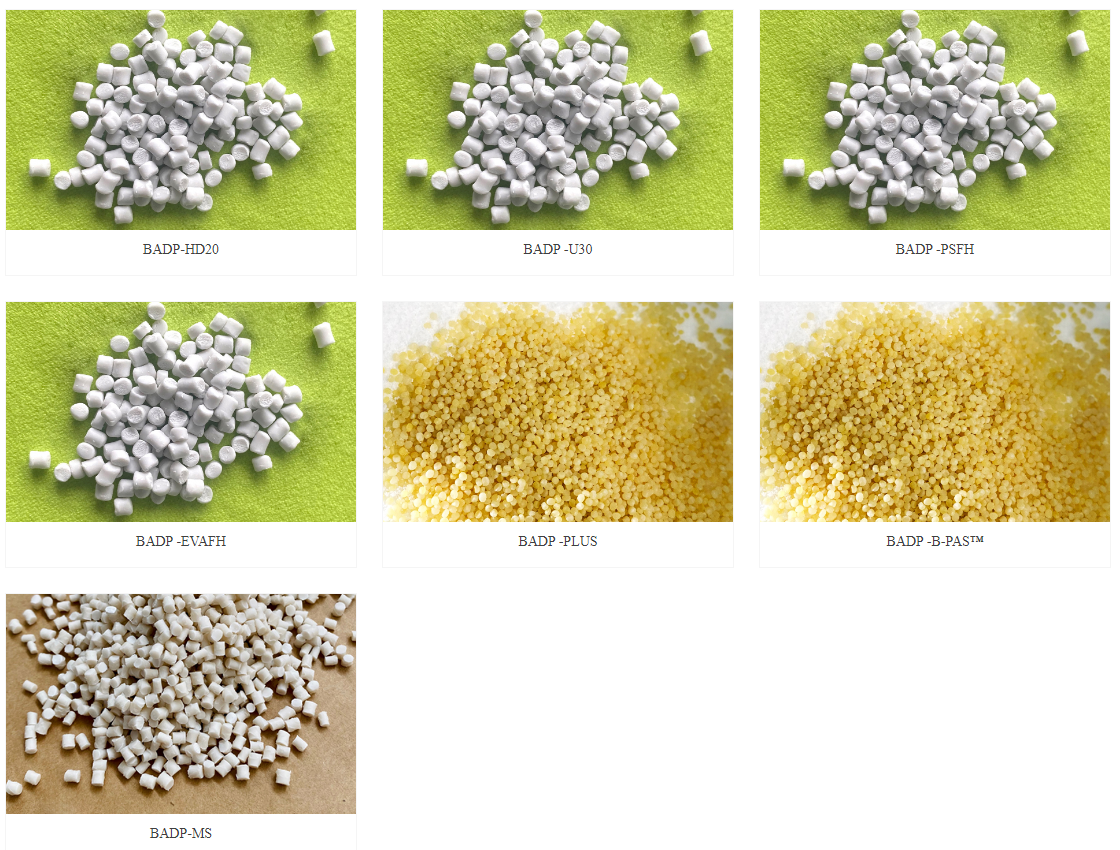PLA, PBAT, BADP Degradable Disposable Plastics
PLA Polylactic Acid
Poly(lactic acid) (PLA) is not only completely biodegradable, and also has good mechanical properties and workability, but due to its shock strength and heat-drawn wire low, range of application is restricted greatly. Adopt at present the method for maximum toughening modifying to add exactly the blend with it other polymeric substances.
PLA Characteristics
Polylactic acid has good thermal stability, a processing temperature of 170-230 degrees, good solvent resistance, and can be processed in multiple ways, such as extrusion, spinning, double stretching, and injection blow molding. In addition to biodegradability, products made from polylactic acid have good biocompatibility, gloss, transparency, hand feeling, and heat resistance. It also has certain bacteria resistance, flame retardancy, and UV resistance, so it is widely used, and can be used as packaging materials, fibers and nonwovens. Currently used mainly in clothing (underwear, outerwear), industry (construction, agriculture, forestry, paper) and health care, etc field
PBAT Poly (Butyleneadipate-co-Terephthalate)
How do you know if they are truly safe for the environment? One material that people question is Polybutyrate Adipate Terephthalate, or PBAT.
PBAT was developed to solve environmental pollution caused by conventional plastics. It is an extremely biodegradable material that even degrades faster than PLA! Products made using PBAT decompose easily with the help of natural microorganisms and bacteria. PBAT is often used in bags to add flexibility, and fast biodegradability, and works to speed up the rate of compostability to comply with compost regulations. It is a necessary ingredient in the product. Additionally, it is quite safe for the environment because it does not leave behind any harmful toxic residue.
BADP bio-based and degradable plastic

Since the country issued a plastic ban in early 2020, many plastic products or raw materials with the concept of "degradable" have appeared on the market. The only ones that can truly achieve full degradation are "PBAT+PLA' alternative materials, and BADP bio-based full ecological fully degradable plastic materials. "PBAT+PLA' materials are not only expensive, but also have obvious deficiencies in the performance of their products. BADP bio-based plastic materials have obvious advantages and significant development space in comparison, and can be called a rising star in the plastic degradation market!
1. Low cost
BADP adopts microbial technology to give full play to the microbial power and resource advantages of nature. The price of its finished products is only about 30% lower than the cost of PLA (starch-based) PBAT (petroleum-based), and its cost is higher than that of starch-based and petroleum-based degradation alternatives The material is nearly twice as low.
Importantly, BADP plastics can be recycled and reused during production and their finished products, and scraps can be recycled, which makes BADP's cost advantage even more obvious.
2. Good quality
BADP fully downgraded plastic material is based on PE or PP, and its product quality is basically the same as that of pure PE and PP plastic products. The data shows that plastic bags, film products, straws, lunch boxes and other products produced by BADP materials are not only completely degraded, but their physical properties surpass other degradable materials in an all-round way, and they have significant antibacterial properties.
3. Does not change the plastic process
BADP bio-based fully degradable plastic masterbatch is fully applicable to the current process of plastic product manufacturers. There is no need to change the equipment and increase the process cost.
4. Eco-friendly
The main degradation carrier of BADP fully downgraded plastic material comes from chitin, which is completely taken from nature. The raw material comes from the waste of biological products such as shells, shrimp shells, and crab shells. The perfect combination of technology.